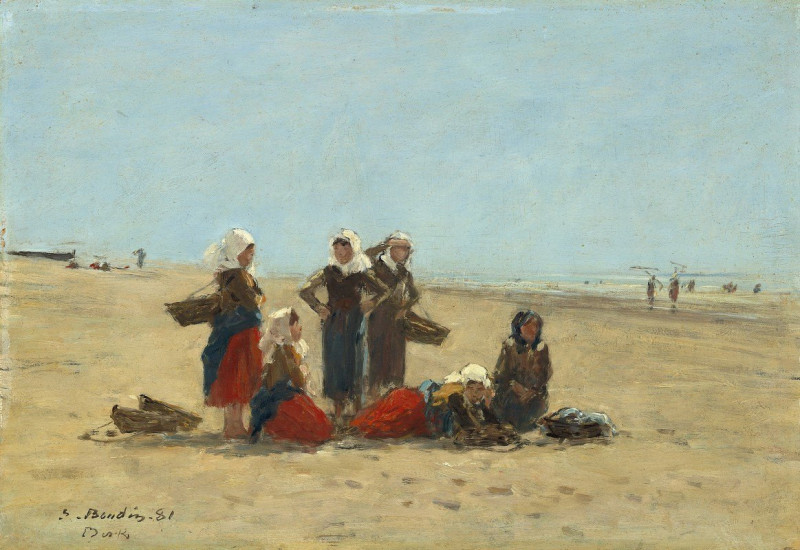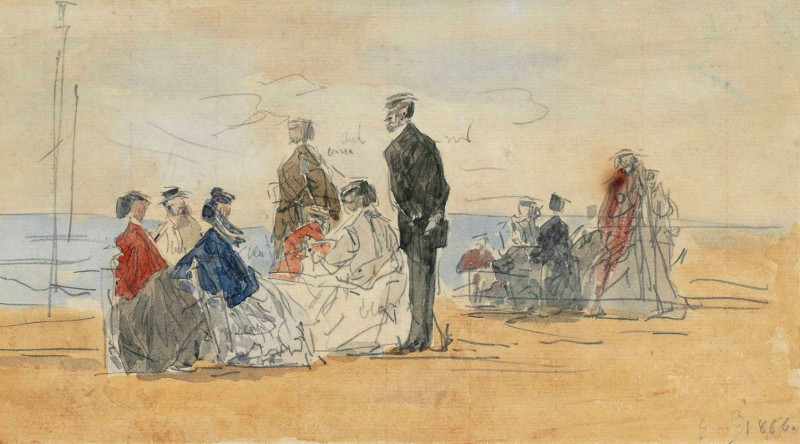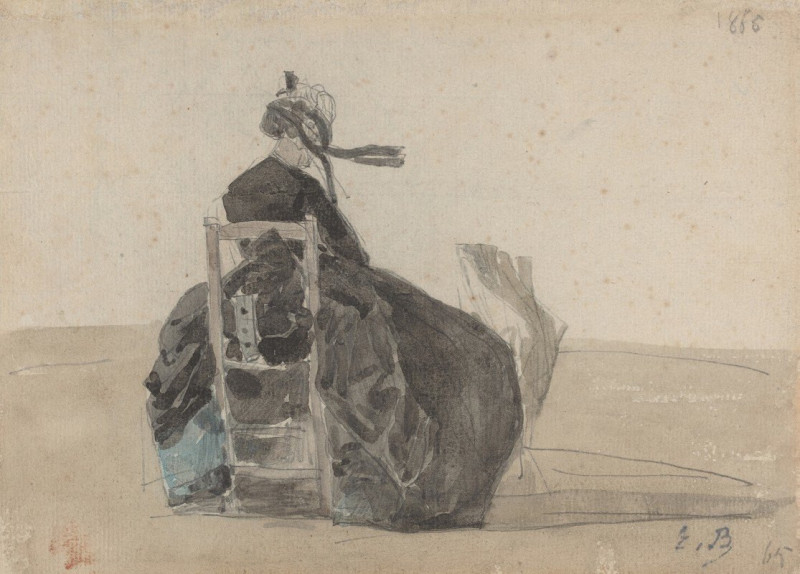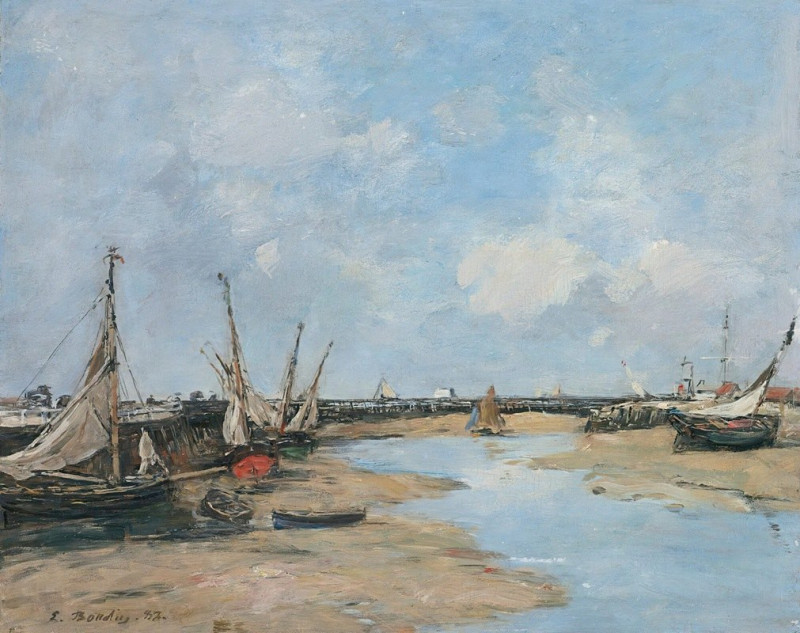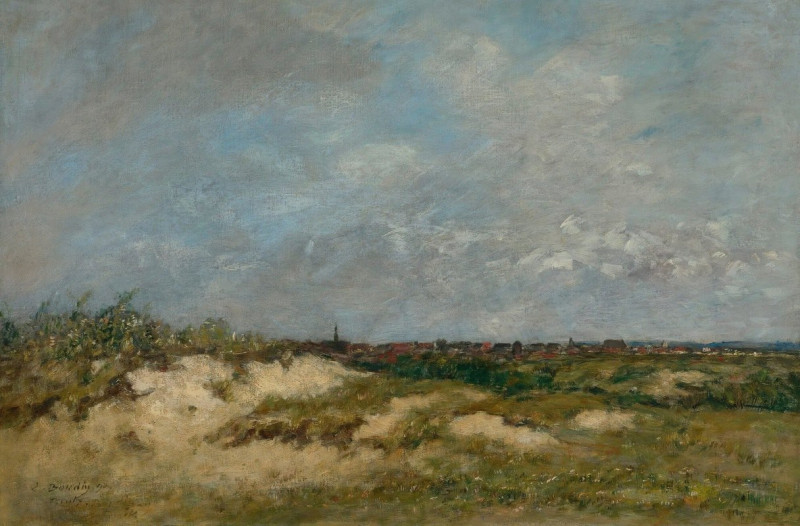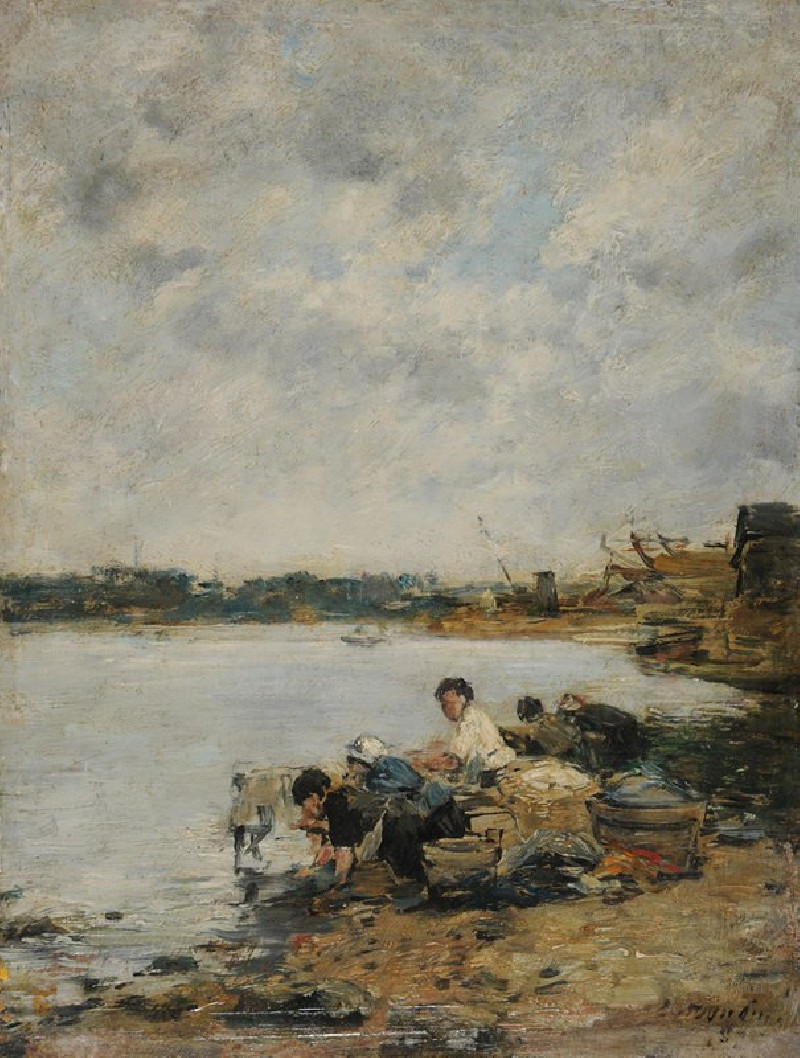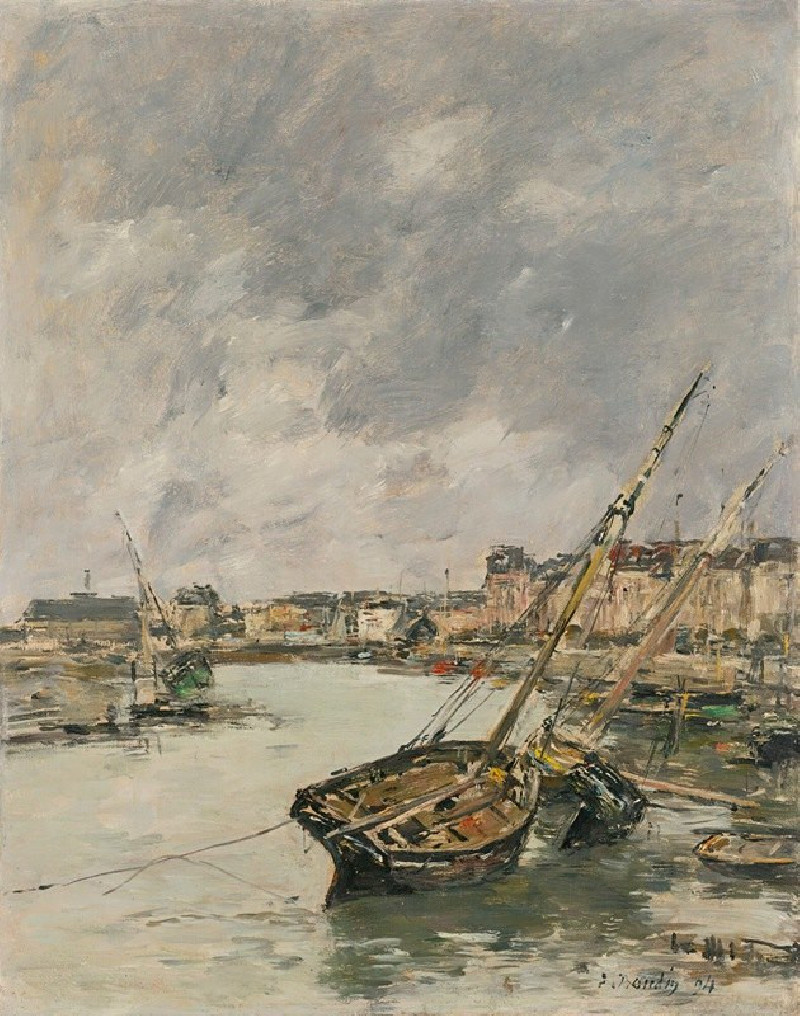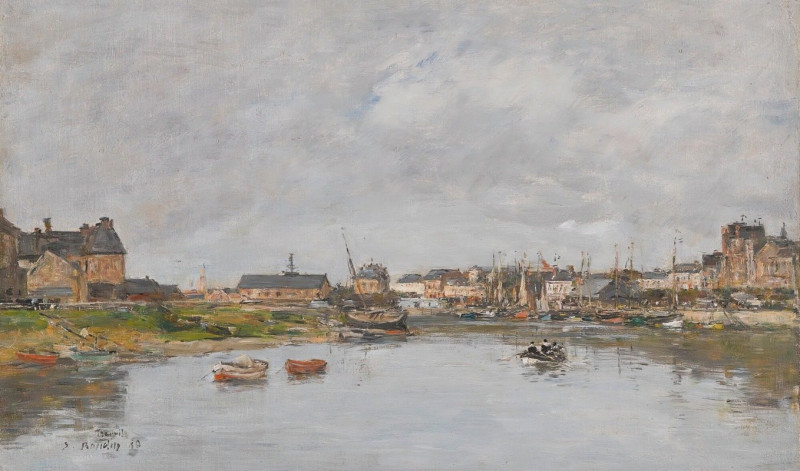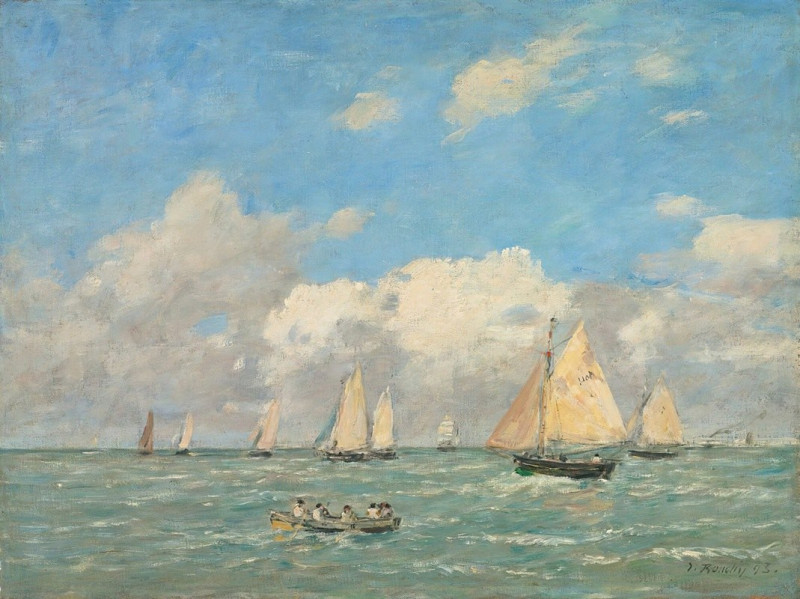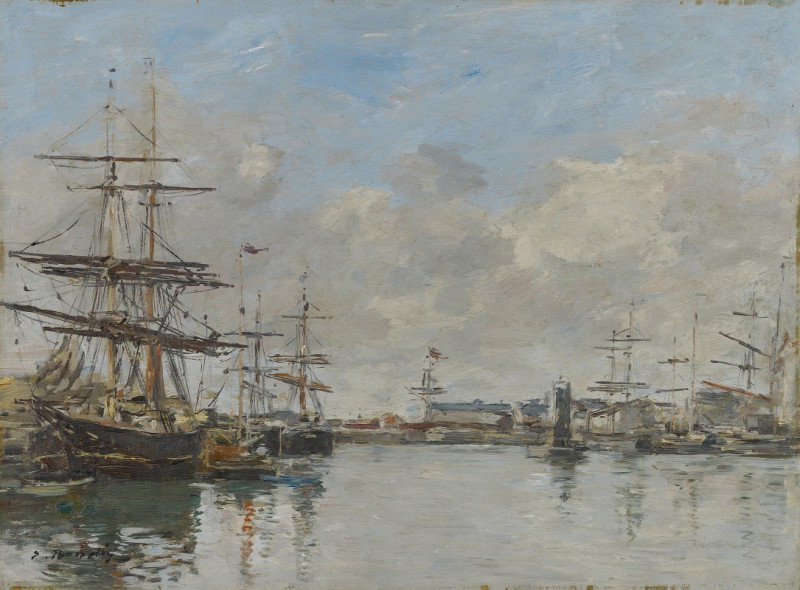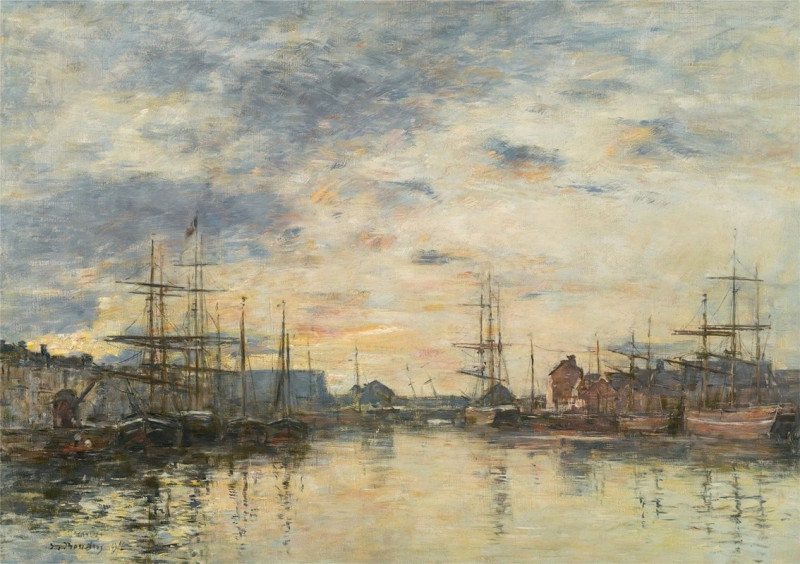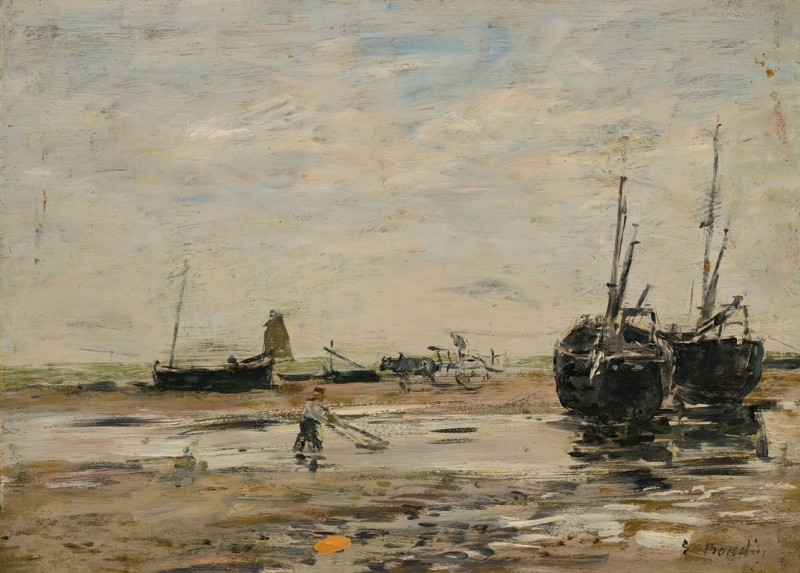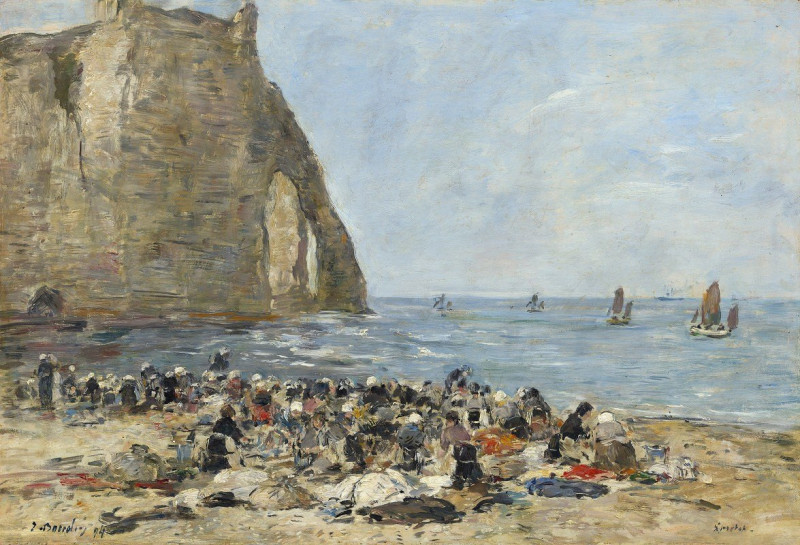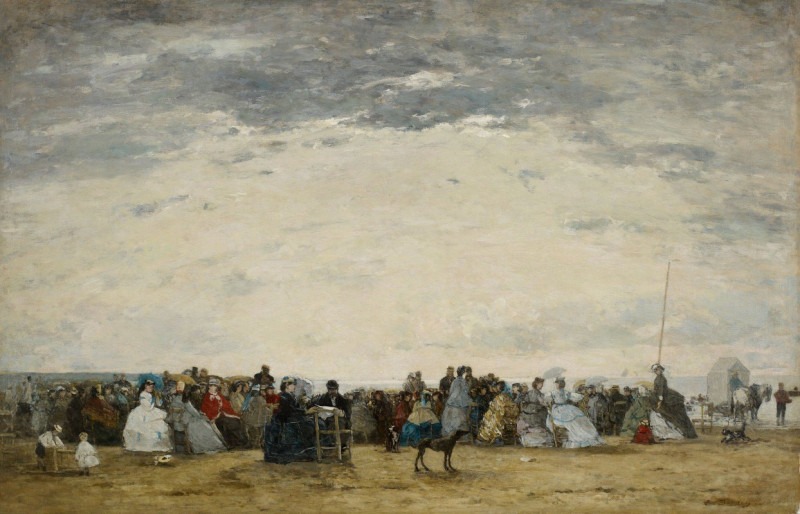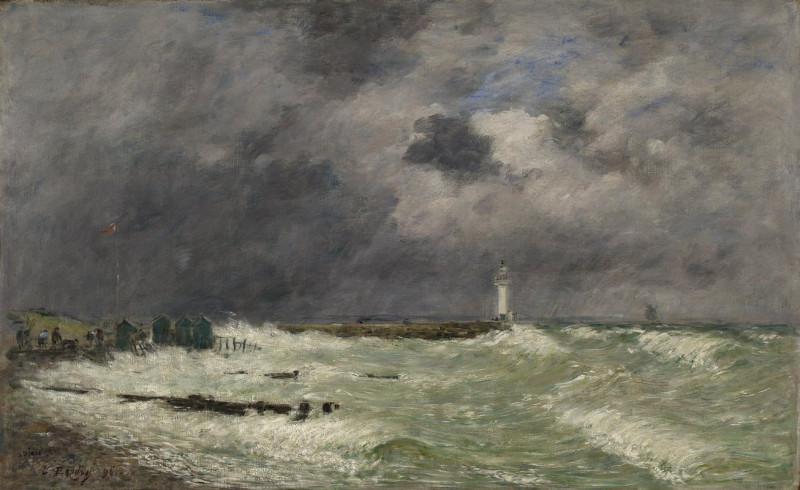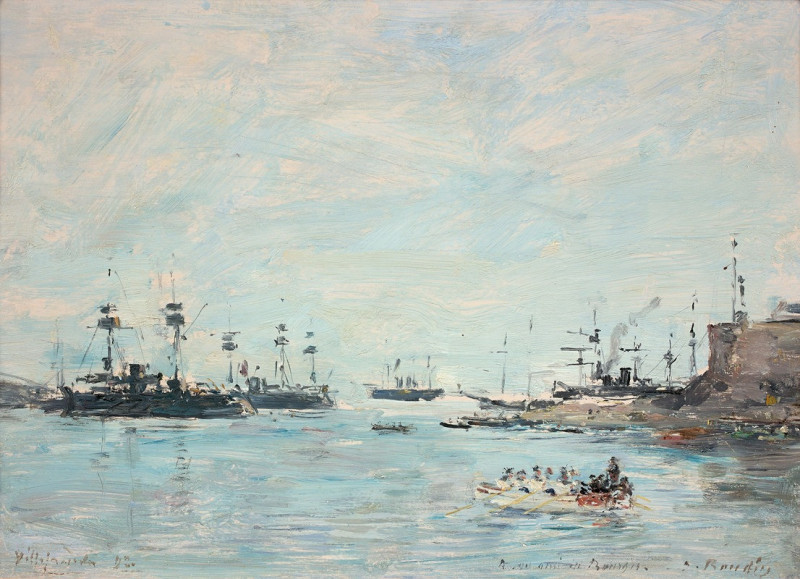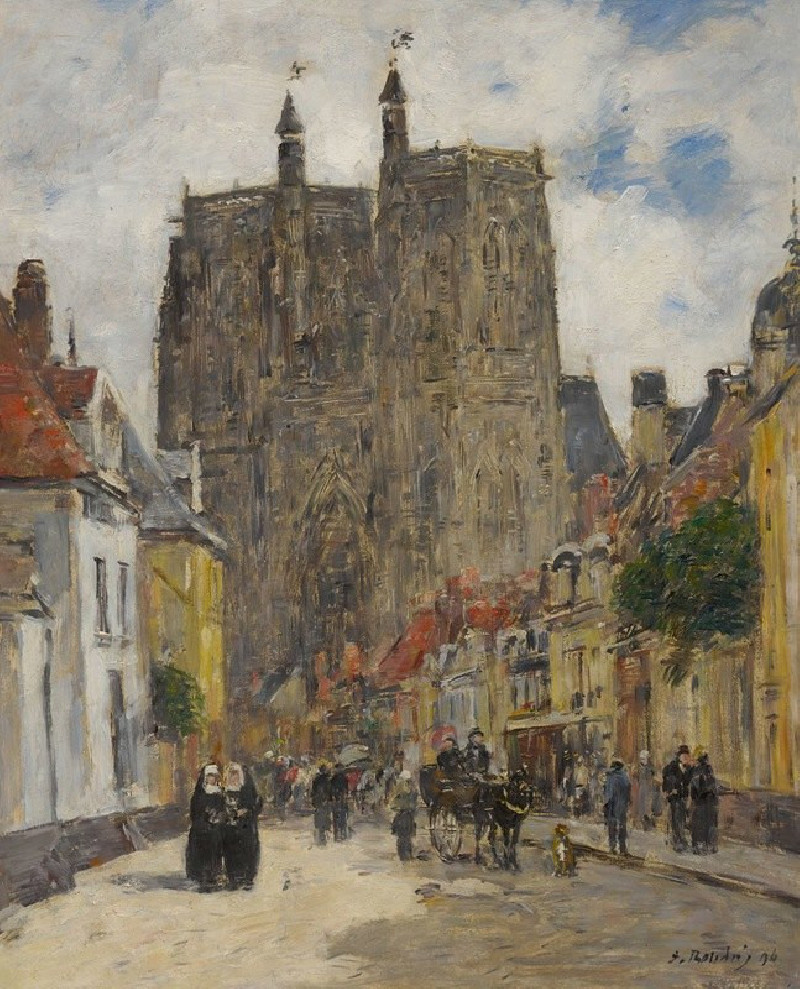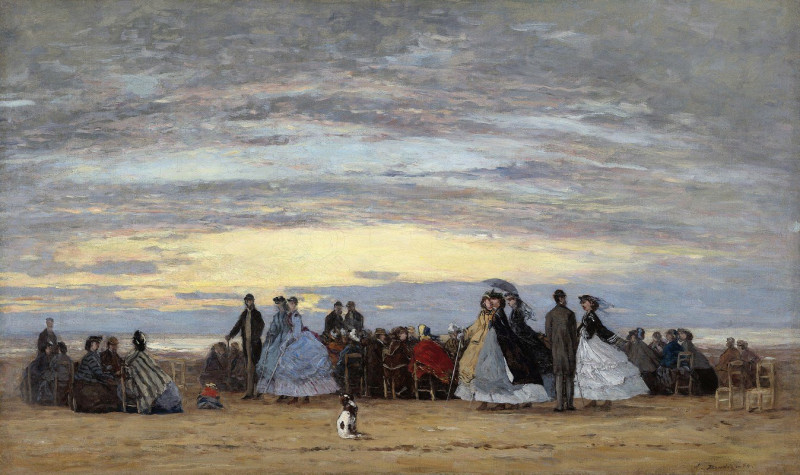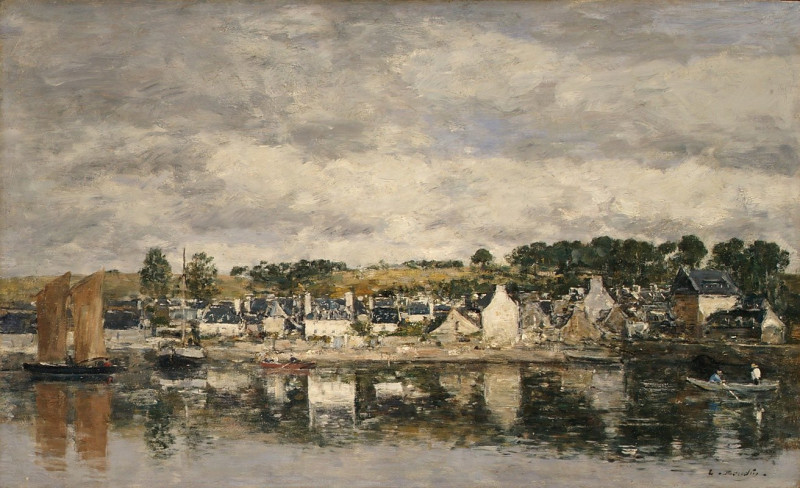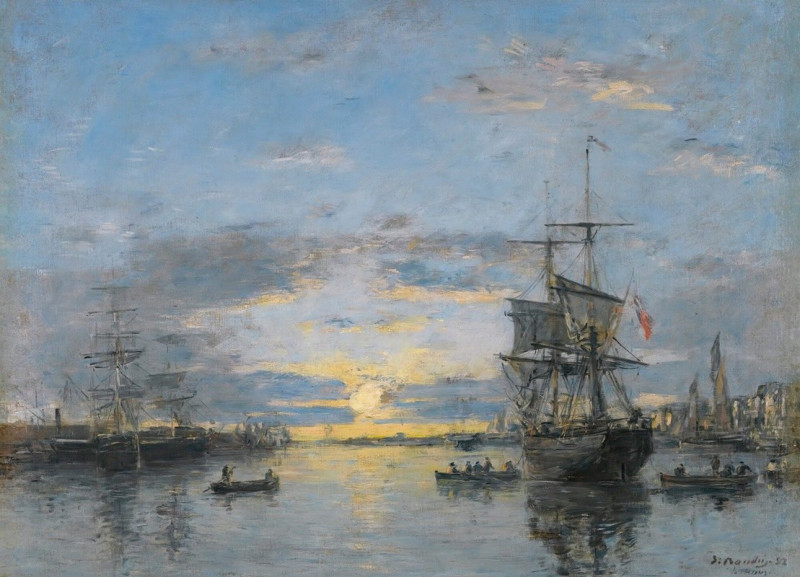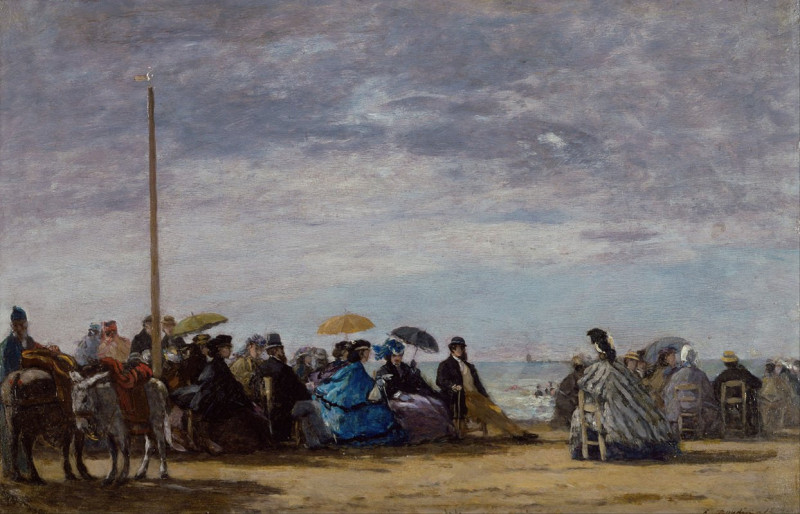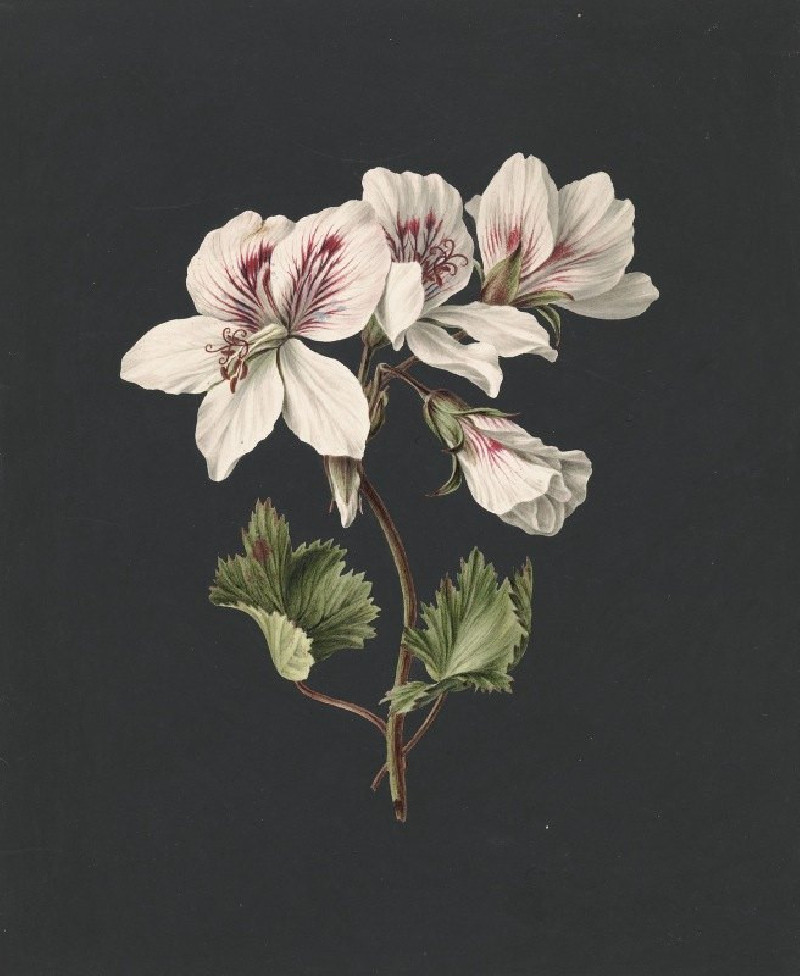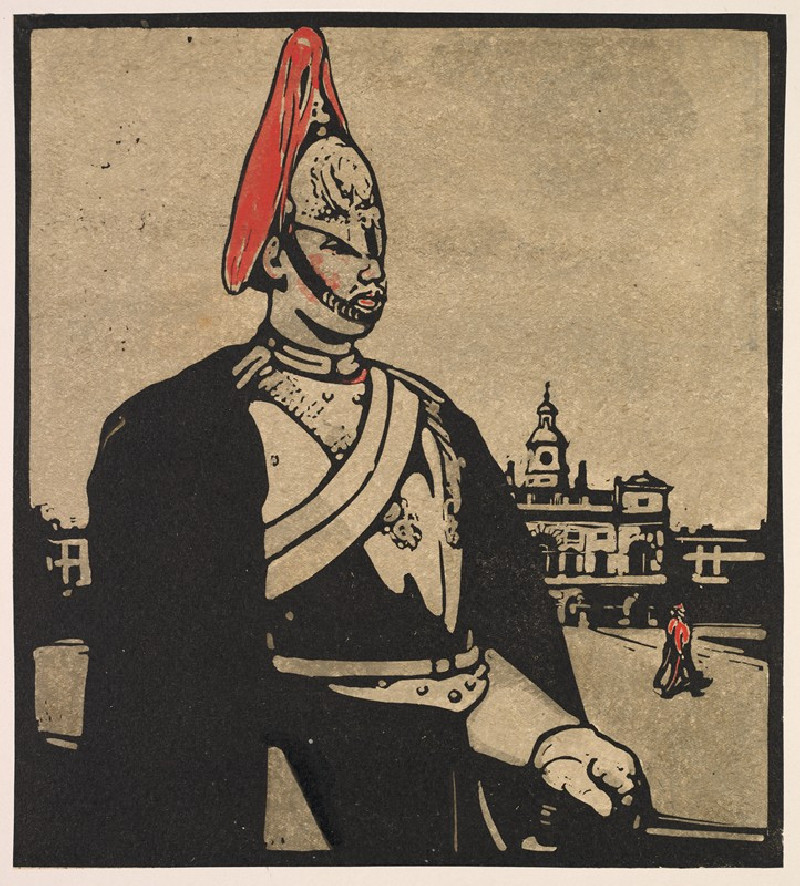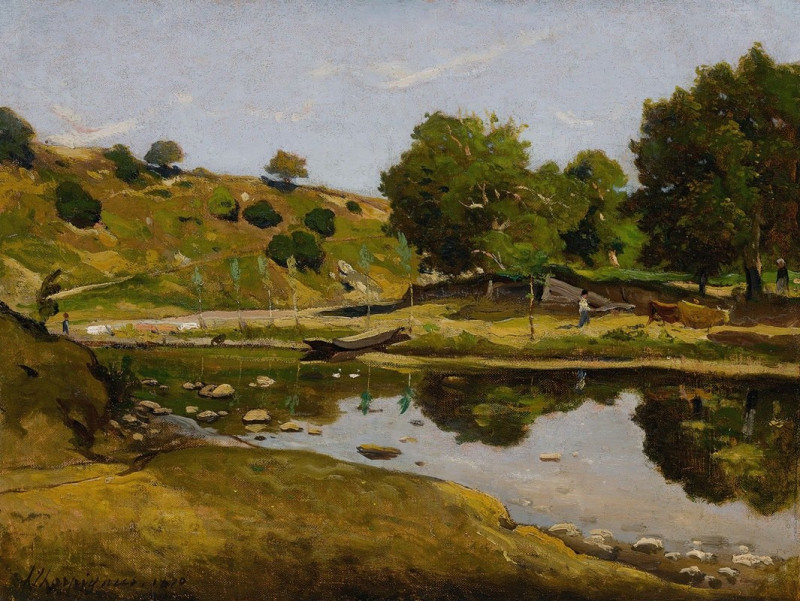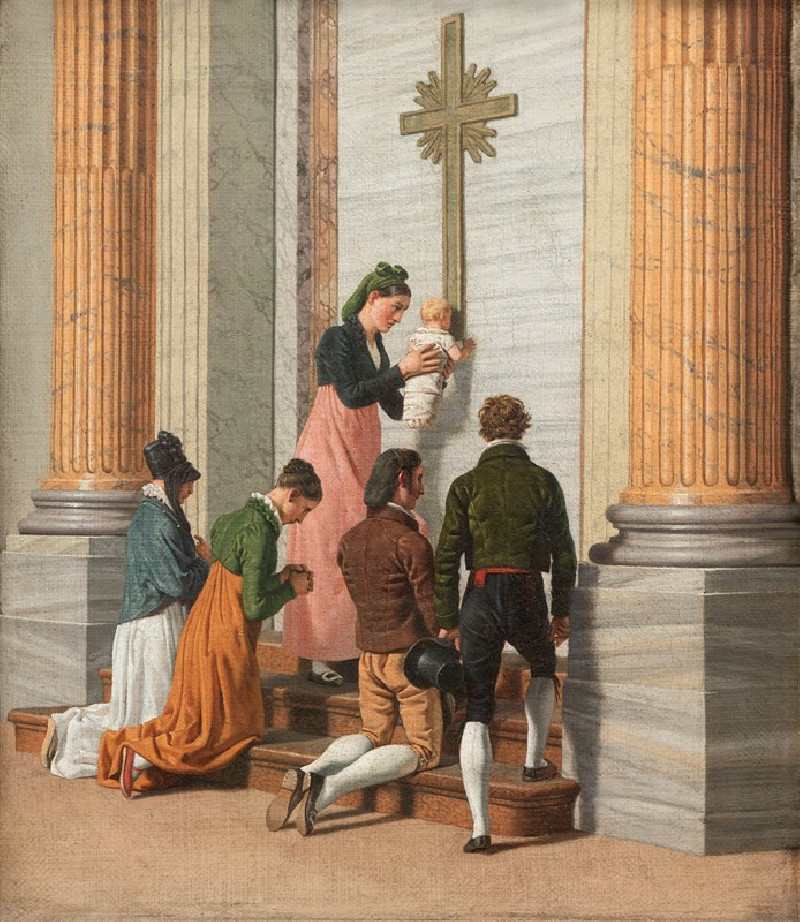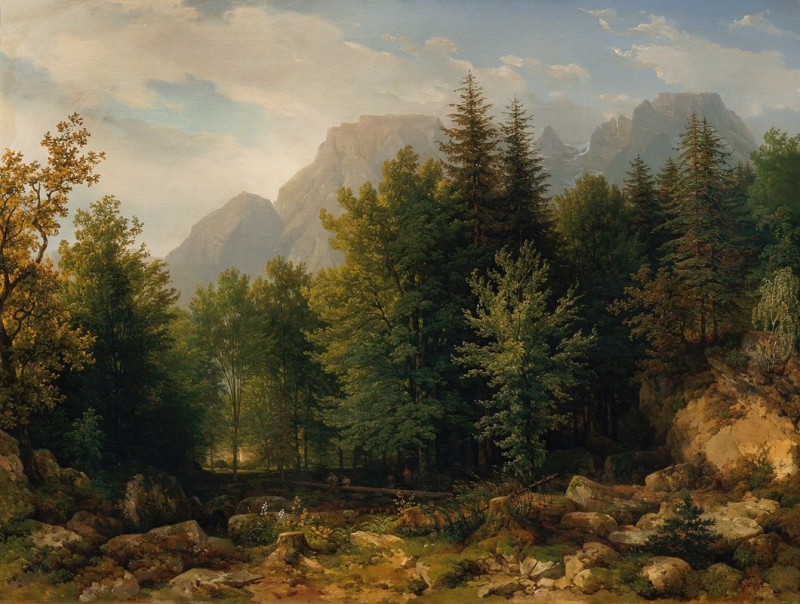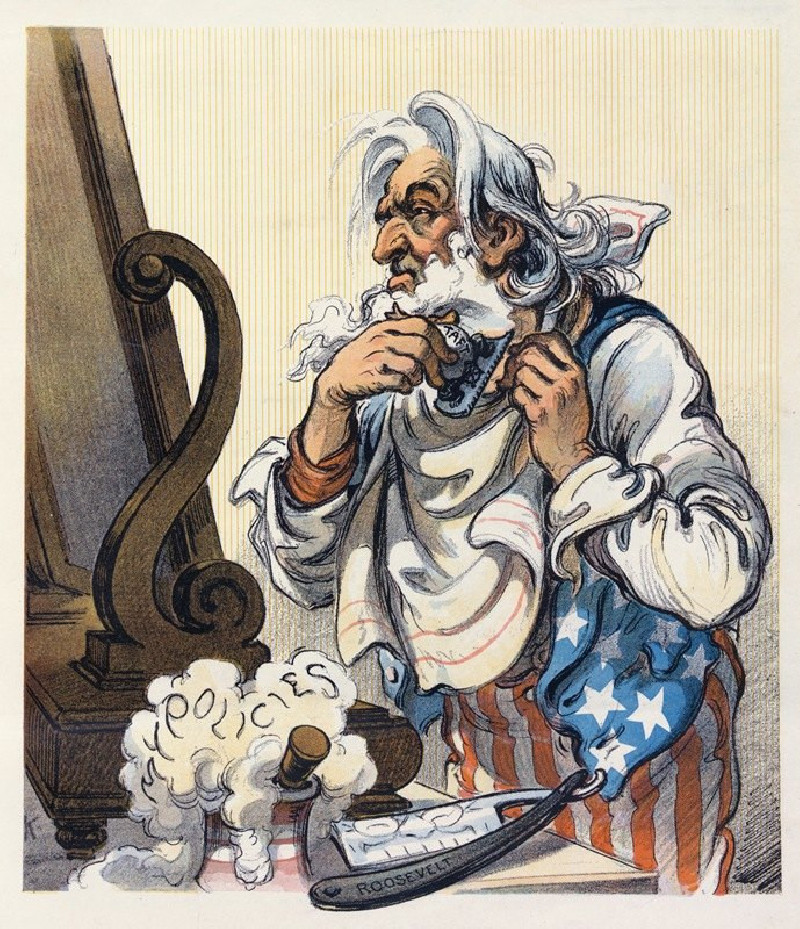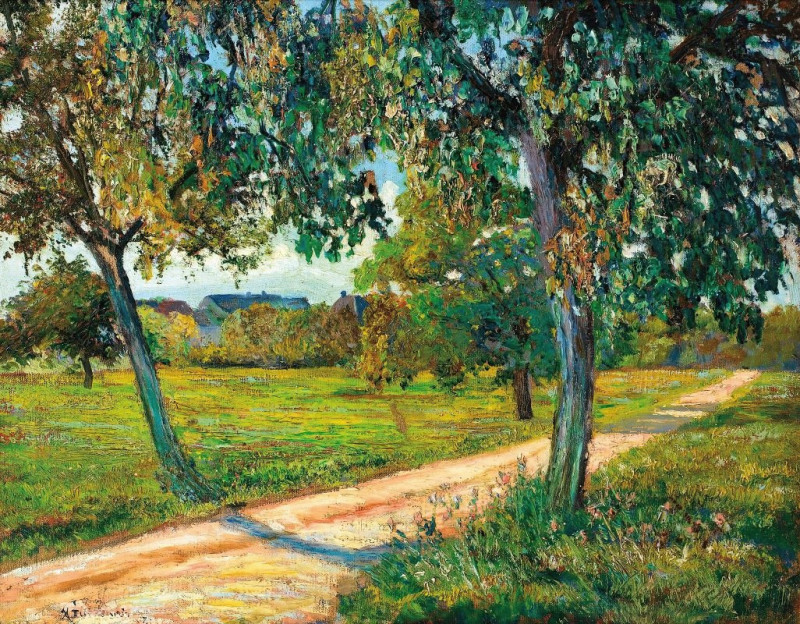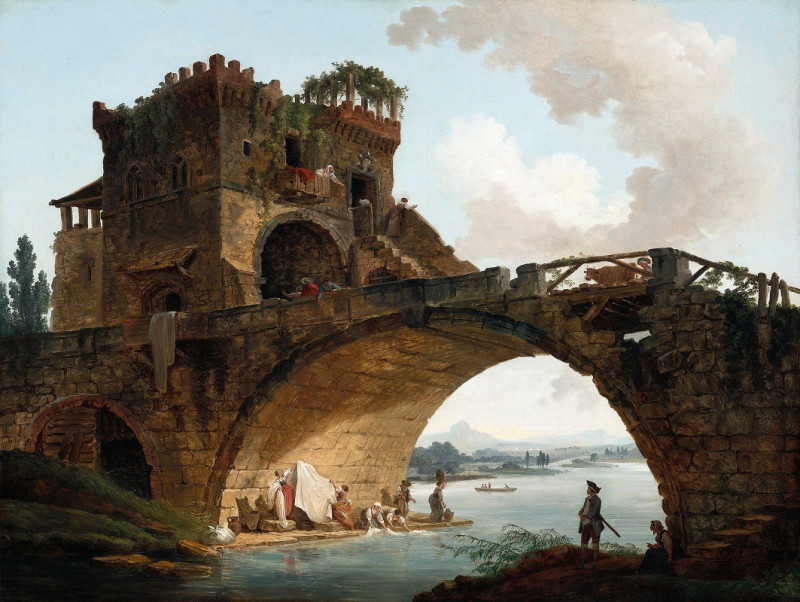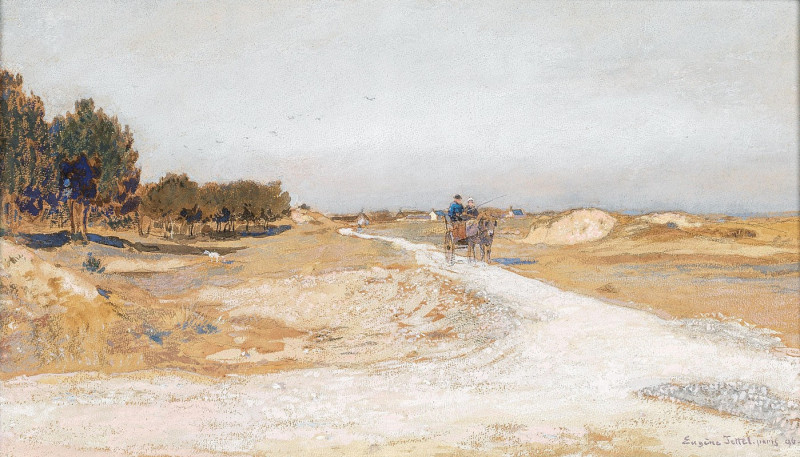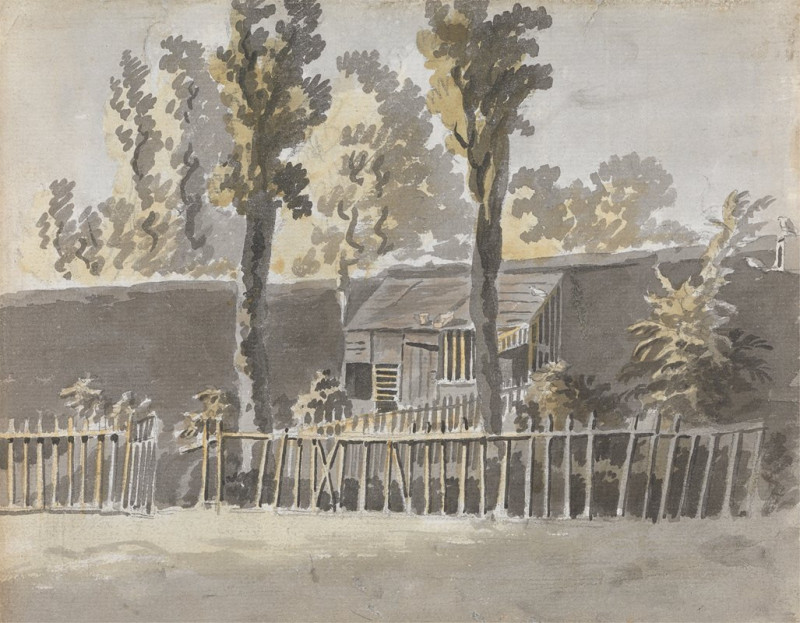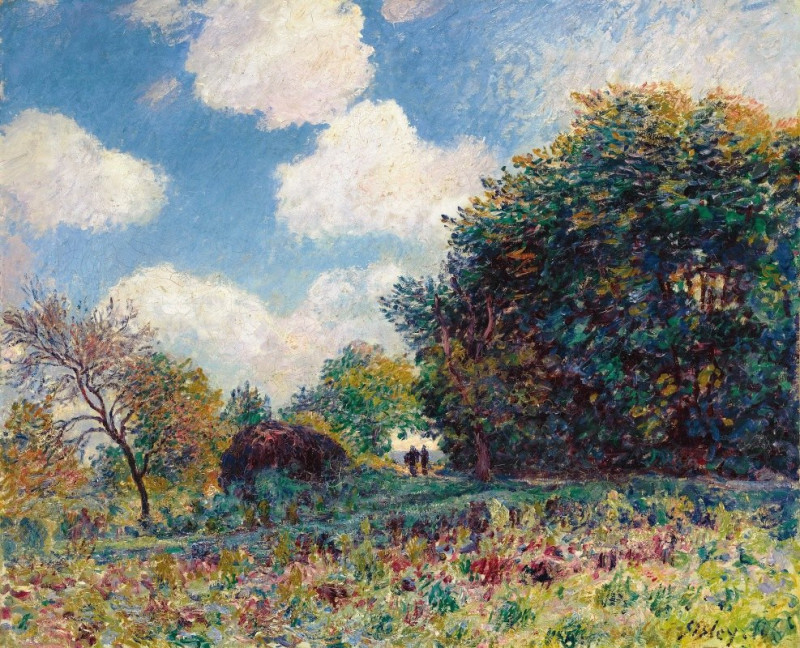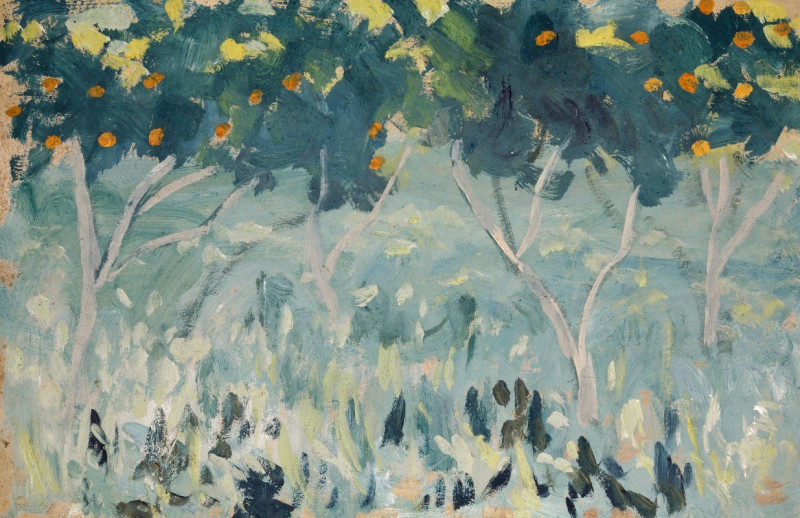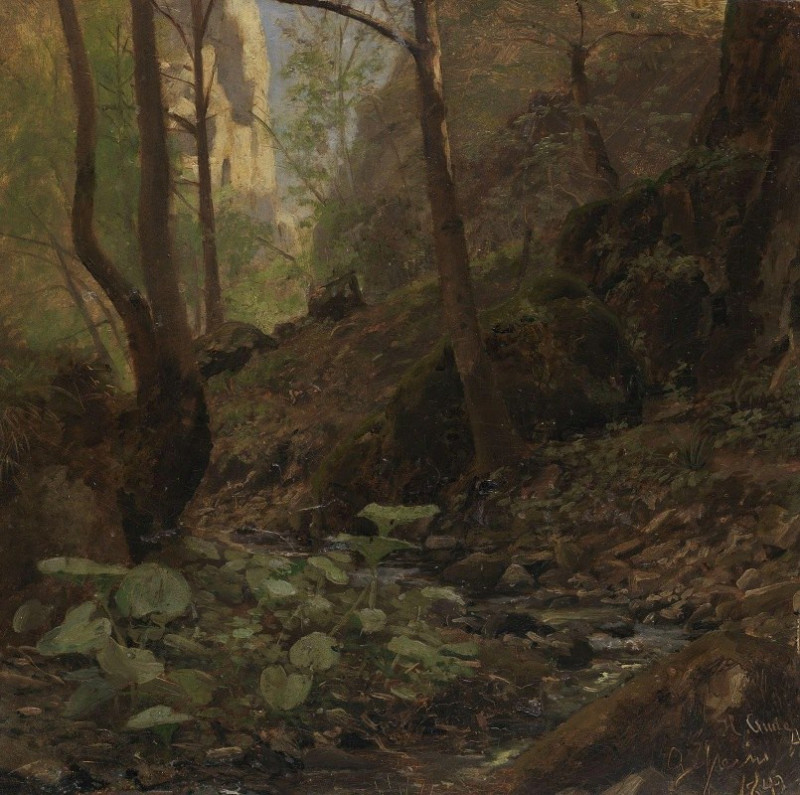Environs De Brest. Embouchure De L’élorn (1873)
Technique: Giclée quality print
Recommended by our customers
More about this artwork
Titled "Environs De Brest. Embouchure De L’élorn," this evocative 1873 painting by Eugène Boudin captures the serene and picturesque landscape near Brest, France, with a glimpse into the estuary of the Élorn river. Eugene Boudin, known for his landscapes and seascapes that beautifully portray the light and atmosphere of the French coast, presents a tranquil yet dynamic scene set against a broadly painted sky, possibly suggestive of an overcast or fading day.The painting effectively conveys the rugged terrain leading to the water's edge. A prominent rocky outcrop to the left suggests a sense of endurance against the elements, while patches of lush greenery add softness and a touch of vibrancy to the landscape. In the distance, the calm Élorn River is peppered with the silhouettes of ships, suggesting the daily life and activity that persists in harmony with nature.Small figures appear near the rock formation, adding a human element to the canvas. Their presence is subtle yet poignant, providing scale and a narrative element that invites viewers to ponder the interactions between humans and their environment. This artwork not only reflects Boudin's mastery of sky, land, and water but also encapsulates a moment of everyday life, poised between the grandeur of nature and human endeavor.Creede with a reputation for his ability to capture fleeting moments under various light conditions, "Environs De Brest. Embouchure De L’élorn" stands as a testament to Boudin’s pivotal role in the development of landscape painting, influencing Impressionist artists who followed.
Delivery
Returns
Eugène Louis Boudin (12 July 1824 – 8 August 1898) was one of the first French landscape painters to paint outdoors. Boudin was a marine painter, and expert in the rendering of all that goes upon the sea and along its shores. His pastels, summary and economic, garnered the splendid eulogy of Baudelaire; and Corot called him the "King of the skies".


